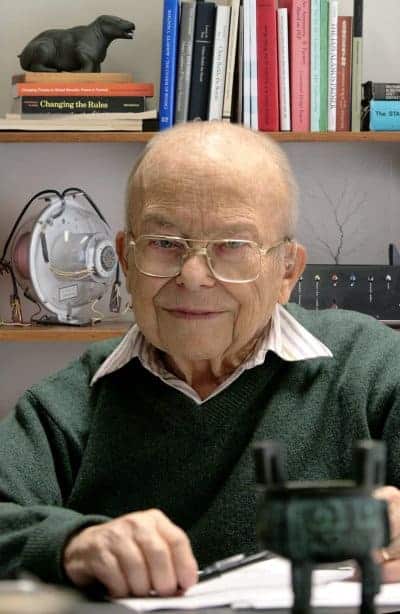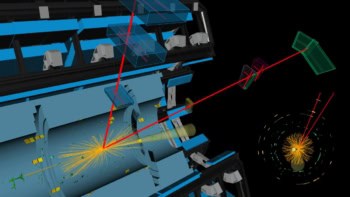The particle physicist Wolfgang Panofsky, who was founding director of the Stanford Linear Accelerator Center (SLAC) in California, has died at the age of 88. Panofsky, who served as SLAC boss for over 20 years, died of a heart attack on 24 September. Apart from his work as a researcher, accelerator builder and science administrator, Panofsky was also a passionate advocate of arms control and international peace.

Wolfgang Panofsky was born into a Jewish family in Berlin on 24 April 1919. At the age of 15, he moved with his family from Germany to the US and graduated from Princeton University in 1938. After receiving a PhD in physics from the California Institute of Technology in 1942, he served as a consultant to the Manhattan atomic-bomb project.
In 1945, Panofsky joined the Radiation Laboratory at the University of California at Berkeley serving first as staff physicist and then as associate professor. In 1951 he moved to Stanford University, where he spent eight years as directory of its High Energy Physics Laboratory. During this time, he and fellow physicist Jack Steinberger were the first to isolate the neutral pi-meson — one of the sub-atomic particles predicted by theorists to account for the strong force binding atomic nuclei.
While at Stanford, Panofsky was also involved in upgrading the university’s “mark III” electron accelerator, which had come on-line in 1951. Although electron-scattering experiments at this machine later led to Robert Hofstadter earning the Nobel Prize for Physics, Panofsky and other physicists at Stanford argued strongly for a much larger and more powerful machine. Those efforts paid off in 1961, when the US Congress authorized construction of SLAC — a two-mile long electron accelerator.
Panofsky was appointed founding director of SLAC — a position he held until he retired in 1984. During this time, he upgraded the lab’s main accelerator and made the case for new high-energy facilities such as the Stanford Positron Electron Accelerating Ring (SPEAR). This machine was used to discover the J/psi particle, which led to physicists realising that quarks are real. SPEAR was also later used as one of the first sources of synchrotron radiation.
Panofsky’s experience in the Manhattan project influenced his thinking on the ethical and social responsibilities of scientists. He played an active role in advising the US government on arms control and international security. He also helped to secure the atmospheric test-ban treaty and in the 1980s spoke out strongly against the “Star Wars” anti-missile programme. In 1989 SLAC set up the Wolfgang Panofsky Fellowship, which supports young scientists who show the “creativity, insight and exceptional achievement” of Panofsky himself.



